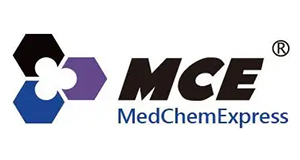Curcumin-d6, CAS 1246833-26-0
Curcumin-d6, CAS 1246833-26-0
SKU
MEXHY-N0005S-1
Packaging Unit
1 mg
Manufacturer
MedChemExpress
Availability:
loading...
Price is loading...
Product Description: Curcumin-d6is a deuterium labeled Curcumin (Turmeric yellow). Curcumin (Turmeric yellow) is a natural phenolic compound with diverse pharmacologic effects including anti-inflammatory, antioxidant, antiproliferative and antiangiogenic activities. Curcumin is an inhibitor of p300 histone acetylatransferase (HATs) and also shows inhibitory effects on NF-κB and MAPKs.
Applications: Cancer-programmed cell death
Formula: C21H14D6O6
References: [1]Gao S, et al. Curcumin attenuates arsenic-induced hepatic injuries and oxidative stress in experimental mice through activation of Nrf2 pathway, promotion of arsenic methylation and urinary excretion. Food Chem Toxicol. 2013 Jul 18. pii: S0278-6915(13)004./[2]Nasiri M, et al. Curcumin and Silibinin Inhibit Telomerase Expression in T47D Human Breast Cancer Cells. Asian Pac J Cancer Prev. 2013;14(6):3449-53./[3]Jiang H, et al. Antidepressant-like effects of curcumin in chronic mild stress of rats: Involvement of its anti-inflammatory action. Prog Neuropsychopharmacol Biol Psychiatry. 2013 Jul 20. pii: S0278-5846(13)00150-4./[4]Guo H, et al. Curcumin induces cell cycle arrest and apoptosis of prostate cancer cells by regulating the expression of IkappaBalpha, c-Jun and androgen receptor. Pharmazie. 2013 Jun;68(6):431-4./[5]Zhu X, et al. Curcumin alleviates neuropathic pain by inhibiting p300/CBP histone acetyltransferase activity-regulated expression of BDNF and cox-2 in a rat model. PLoS One. 2014 Mar 6;9(3):e91303.
CAS Number: 1246833-26-0
Molecular Weight: 374.42
Research Area: Infection; Metabolic Disease; Inflammation/Immunology
Solubility: 10 mM in DMSO
Target: Autophagy;Epigenetic Reader Domain;Ferroptosis;Histone Acetyltransferase;Influenza Virus;Keap1-Nrf2;Mitophagy
Applications: Cancer-programmed cell death
Formula: C21H14D6O6
References: [1]Gao S, et al. Curcumin attenuates arsenic-induced hepatic injuries and oxidative stress in experimental mice through activation of Nrf2 pathway, promotion of arsenic methylation and urinary excretion. Food Chem Toxicol. 2013 Jul 18. pii: S0278-6915(13)004./[2]Nasiri M, et al. Curcumin and Silibinin Inhibit Telomerase Expression in T47D Human Breast Cancer Cells. Asian Pac J Cancer Prev. 2013;14(6):3449-53./[3]Jiang H, et al. Antidepressant-like effects of curcumin in chronic mild stress of rats: Involvement of its anti-inflammatory action. Prog Neuropsychopharmacol Biol Psychiatry. 2013 Jul 20. pii: S0278-5846(13)00150-4./[4]Guo H, et al. Curcumin induces cell cycle arrest and apoptosis of prostate cancer cells by regulating the expression of IkappaBalpha, c-Jun and androgen receptor. Pharmazie. 2013 Jun;68(6):431-4./[5]Zhu X, et al. Curcumin alleviates neuropathic pain by inhibiting p300/CBP histone acetyltransferase activity-regulated expression of BDNF and cox-2 in a rat model. PLoS One. 2014 Mar 6;9(3):e91303.
CAS Number: 1246833-26-0
Molecular Weight: 374.42
Research Area: Infection; Metabolic Disease; Inflammation/Immunology
Solubility: 10 mM in DMSO
Target: Autophagy;Epigenetic Reader Domain;Ferroptosis;Histone Acetyltransferase;Influenza Virus;Keap1-Nrf2;Mitophagy
| SKU | MEXHY-N0005S-1 |
|---|---|
| Manufacturer | MedChemExpress |
| Manufacturer SKU | HY-N0005S-1 |
| Package Unit | 1 mg |
| Quantity Unit | STK |
| Product information (PDF) | Download |
| MSDS (PDF) |
|

 Deutsch
Deutsch






